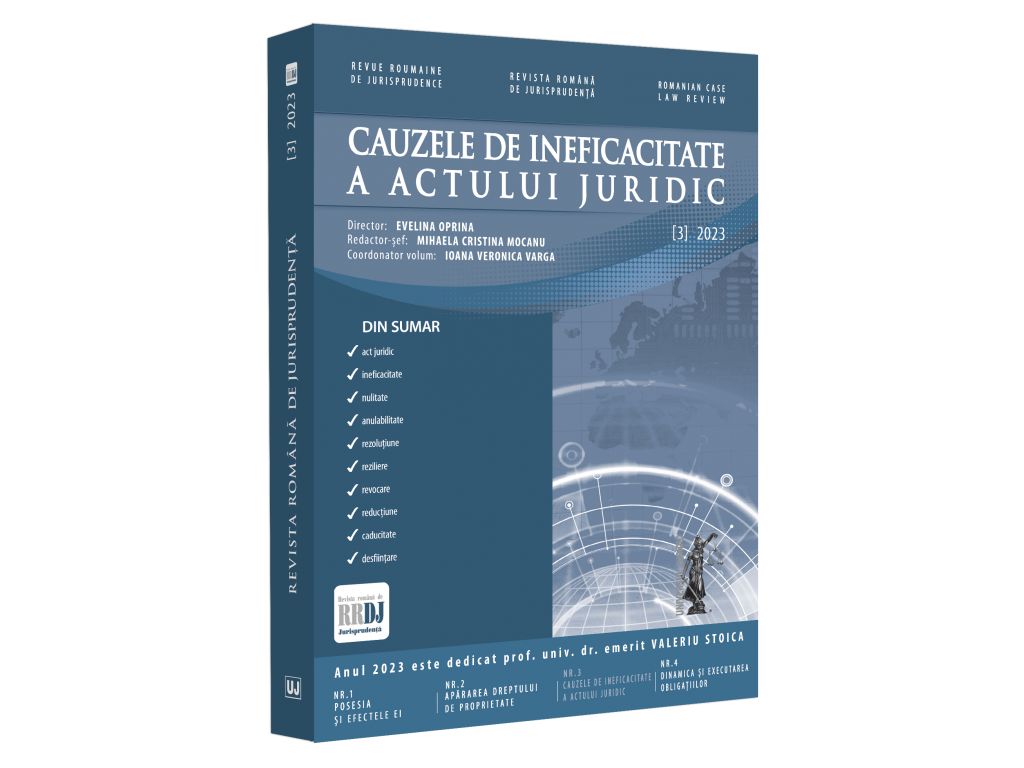Absolute nullity of the contract of sale by virtue of the principle of "resolvitur jus accipientis". Proof of the good faith of the sub-acquire
JURISPRUDENŢĂ COMENTATĂ ŞI ADNOTATĂ
Abstract
The dissolution of a contract produces legal effects vis-à-vis the parties but also vis-à-vis third parties, justified also by the application of the principle nemo dat quod non habet, i.e. if it turns out that the transferor of an asset could not transfer a right because his title had been extinguished, the sub-transferor could not acquire more, since the annulment of the primary act leads to the annulment of the subsequent act because of its link with the first.
The maintenance of the subsequent act, as an exception to the above principle, is justified by two principles of law: the principle of protecting the good faith of the sub-seller of an asset for valuable consideration and the principle of ensuring the stability of the civil circuit. The principle of protecting the good faith of the sub-acquirer is in fact an application of the theory of appearance in law, which requires the cumulative fulfilment of two conditions: the good faith of the third party who entered into the legal act with the apparent owner of the property right and the existence of a common and invincible mistake, which consists in the generally accepted belief that the apparent owner is the true owner of the property right.
Good faith, as a condition for the aforementioned principle to apply, requires the acquirer to take all necessary steps to convince himself that the transferor is the owner of the property transferred.








